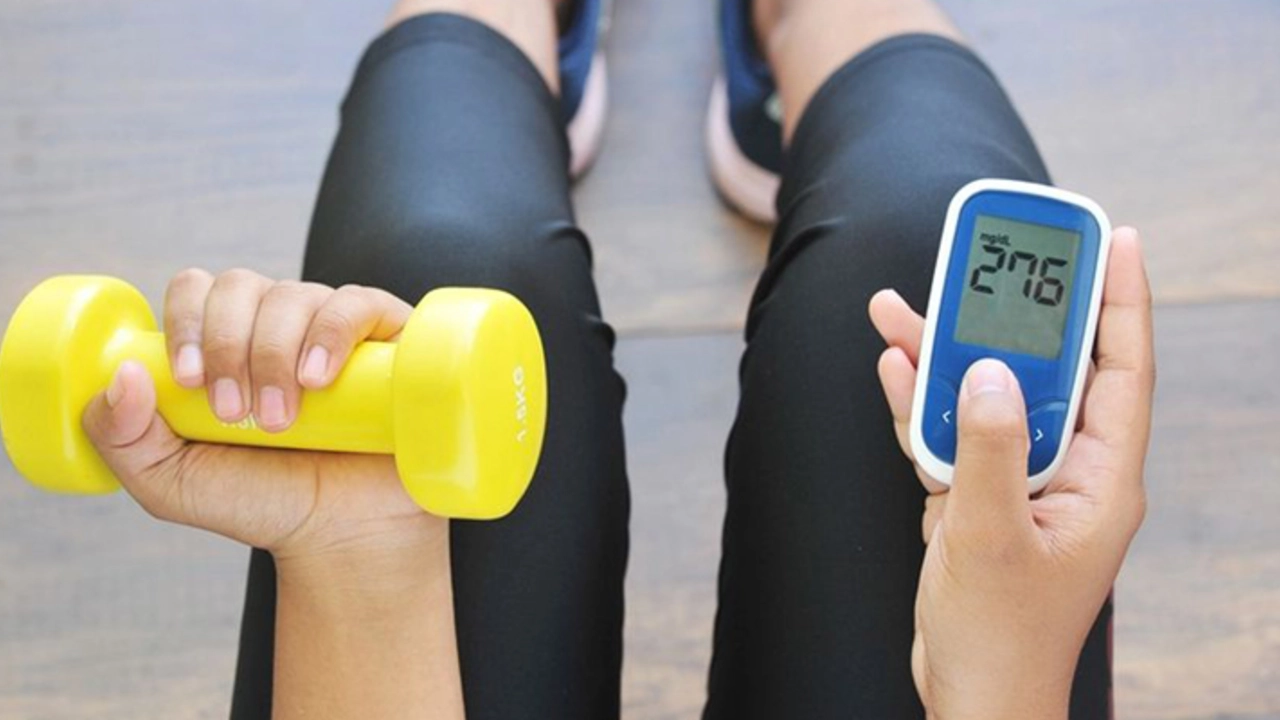The Benefits of Regular Physical Activity for Diabetics
Introduction: The Importance of Physical Activity for Diabetics
As someone living with diabetes, I know firsthand the importance of maintaining a healthy lifestyle, including regular physical activity. Exercise plays a crucial role in managing diabetes and improving overall health. In this article, I will discuss the numerous benefits of regular physical activity for diabetics and provide practical tips for incorporating exercise into your daily routine.
Improved Blood Sugar Control
One of the main benefits of regular physical activity for diabetics is improved blood sugar control. Exercise increases insulin sensitivity, allowing your body to use insulin more effectively and lower blood glucose levels. This is particularly important for people with type 2 diabetes, who often struggle with insulin resistance. By engaging in regular exercise, you can help your body maintain better blood sugar levels, reducing the risk of dangerous fluctuations and long-term complications.
Weight Management
Weight management is another significant benefit of regular physical activity for diabetics. Maintaining a healthy weight is essential for managing diabetes, as excess weight can contribute to insulin resistance and make it more difficult to control blood sugar levels. Exercise, in combination with a balanced diet, can help you lose weight or maintain a healthy weight. This will not only improve your diabetes management but also reduce your risk of developing other health problems related to obesity, such as heart disease and high blood pressure.
Lower Blood Pressure
High blood pressure, or hypertension, is a common issue for many people with diabetes. Regular physical activity can help lower blood pressure by improving blood flow and circulation. Reduced blood pressure decreases the strain on your heart and blood vessels, lowering your risk of developing heart disease and stroke. By incorporating regular exercise into your routine, you can effectively manage your blood pressure and improve your overall cardiovascular health.
Increased Energy Levels
Many diabetics, myself included, often experience fatigue and low energy levels due to blood sugar imbalances. Regular physical activity can help increase energy levels by improving blood flow, oxygen delivery, and glucose metabolism. Exercise also releases endorphins, which can boost your mood and give you a sense of well-being. By engaging in regular physical activity, you can effectively combat fatigue and improve your overall quality of life.
Improved Sleep Quality
Did you know that regular physical activity can also improve sleep quality for diabetics? Exercise has been shown to help regulate sleep patterns, reduce insomnia, and improve overall sleep quality. Getting a good night's sleep is essential for managing diabetes, as it allows your body to properly regulate hormones and repair itself. By incorporating regular exercise into your routine, you can enjoy better sleep and wake up feeling more refreshed and energized.
Reduced Stress and Anxiety
Managing diabetes can be stressful, and stress can negatively impact blood sugar levels. Regular physical activity has been proven to help reduce stress and anxiety by releasing mood-enhancing chemicals in the brain, such as endorphins and serotonin. Exercise can also provide a mental break from the daily stressors of life, allowing you to focus on your body and movement instead. By engaging in regular physical activity, you can effectively manage stress and improve your mental well-being.
Enhanced Mental Sharpness
Regular physical activity can also enhance mental sharpness and cognitive function in diabetics. Exercise has been shown to improve memory, concentration, and problem-solving abilities. This is particularly important for diabetics, as high blood sugar levels can negatively impact cognitive function. By incorporating regular exercise into your routine, you can keep your mind sharp and improve your overall mental health.
Promotes Healthy Habits and Lifestyle
Lastly, engaging in regular physical activity can help promote healthy habits and a more active lifestyle. As a diabetic, it's essential to prioritize your health and well-being. Exercise is a vital component of a healthy lifestyle and can encourage you to make other positive changes, such as adopting a balanced diet and quitting smoking. By committing to regular physical activity, you are taking a significant step towards better diabetes management and improved overall health.
Conclusion: Make Physical Activity a Priority
In conclusion, regular physical activity offers numerous benefits for diabetics, including improved blood sugar control, weight management, lower blood pressure, increased energy levels, improved sleep quality, reduced stress and anxiety, enhanced mental sharpness, and promotion of healthy habits and lifestyle. As someone living with diabetes, I can personally attest to the positive impact of exercise on my health and well-being. I encourage you to make physical activity a priority in your life and experience the many benefits it has to offer.







5 Comments
ariel javier
June 26, 2023 at 05:30
The article grossly oversimplifies the complex metabolic pathways involved in glucose homeostasis.
While the author extols physical activity, they neglect to mention the precise mechanisms by which aerobic versus anaerobic exercise differentially modulates insulin receptor sensitivity.
Moreover, the claim that exercise alone can “significantly lower blood pressure” disregards the plethora of pharmacologic interventions that are clinically validated.
It is egregious to suggest that a casual jog will substitute for evidence‑based antihypertensive therapy.
The author also fails to address the contraindications for high‑intensity interval training in patients with peripheral neuropathy.
A rigorous review must incorporate the role of glycogen depletion and subsequent hepatic gluconeogenesis post‑exercise.
Readers are left with a naïve belief that any movement is beneficial, ignoring the necessity of periodized training plans.
The omission of interval timing, heart‑rate zones, and VO₂max calculations renders the guidance ineffective for serious diabetics.
Additionally, the article does not differentiate between type 1 and type 2 pathophysiology, which is a fundamental oversight.
The recommendation to “just start moving” lacks actionable metrics such as MET‑minutes per week.
It also neglects the psychosocial barriers that many patients encounter, such as depression or limited access to safe walking environments.
Without addressing these variables, the piece borders on opportunistic health propaganda.
A competent health professional would cite randomized controlled trials that quantify the HbA1c reduction attributable to specific exercise regimens.
The failure to reference such literature betrays a superficial understanding of the subject matter.
In conclusion, the article’s well‑meaning tone cannot compensate for its methodological deficiencies and reckless simplifications.
Bryan L
June 26, 2023 at 05:48
I totally get where you’re coming from – living with diabetes can feel like a constant balancing act, and adding exercise into the mix can seem daunting. 😌 The truth is, moving your body doesn’t have to be a chore; even short walks or a quick bike ride can help keep your blood sugar steady and lift your mood. It’s all about finding something you enjoy and fitting it into your daily rhythm, whether that’s dancing in the kitchen or stretching while watching your favorite show. Keep experimenting, and you’ll discover the sweet spot where activity feels rewarding, not exhausting.
joseph rozwood
June 26, 2023 at 06:08
Honestly, this piece reads like a faint echo of a wellness blog from the early 2000s – all sparkle, no substance.
It drifts lazily over the facts, sprinkling buzzwords without any real depth, and that pretentious veneer quickly falls apart.
The assertions are dramatic yet lack rigour, and the occasional typo (like "exrcise") only underscores the sloppy execution.
One would expect a more grounded analysis, but instead we get a shallow narrative that does little more than re‑hash common knowledge.
Richard Walker
June 26, 2023 at 06:33
Solid advice, nicely put.
Julien Martin
June 26, 2023 at 06:50
Appreciate the concise endorsement! To build on that, integrating structured aerobic sessions-aiming for 150 minutes of moderate‑intensity activity per week-can improve insulin sensitivity and glycemic control. Pairing this with a balanced macronutrient distribution, mindful of the glycemic index, further optimizes metabolic outcomes. Keep the momentum, and the cumulative effects will be evident in both biomarkers and day‑to‑day vitality.